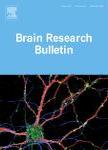版权所有:内蒙古大学图书馆 技术提供:维普资讯• 智图
内蒙古自治区呼和浩特市赛罕区大学西街235号 邮编: 010021

作者机构:Chongqing Univ Canc Hosp Dept Radiol Chongqing 400030 Peoples R China Chongqing Univ Sch Med Chongqing Peoples R China
出 版 物:《BRAIN RESEARCH BULLETIN》 (Brain Res. Bull.)
年 卷 期:2025年第221卷
页 面:111210-111210页
核心收录:
学科分类:1002[医学-临床医学] 1001[医学-基础医学(可授医学、理学学位)] 10[医学]
基 金:National Natural Science Foundation of China [82371937, 82071883] Chongqing Municipal Health Commission Medical Research Project [2025WSJK006] Chongqing Medical Research Project of Combination of Science and Medicine [2024MSXM036, 2025QNXM060] Chongqing Natural Science Foundation [CSTB2024NSCQ-MSX0236, CSTB2022NSCQ-MSX0396] Graduate Research and Innovation Foundation of Chongqing, China [CYB240063] Chongqing Shapingba District Technological Innovation Project [2024133, 2024163]
主 题:Bone metastasis pain Resting-state functional magnetic resonance imaging Diffusion spectrum imaging Brain networks Structure-function coupling
摘 要:Background: Cancer pain is a common symptom in patients with malignant tumors and associated with poor prognosis and a high risk of death. Structural connectivity (SC) and functional connectivity (FC) couplings have not yet been explored in lung cancer patients with bone metastasis pain. Methods: In total, 51 patients with lung cancer without bone metastasis pain (BMP-), 52 patients with lung cancer with bone metastasis pain (BMP+), and 28 healthy controls (HC) were prospectively enrolled in our study. Firstly, SC-FC couplings were measured and analyzed at global, regional, and modular levels. Subsequently, individualized SC-FC coupling networks were constructed based on the Euclidean distance metric. In addition, the convolutional neural network (CNN) model was selected to analyze and classify three groups based on individualized networks. Results: The coupling analysis demonstrated that weaker SC-FC couplings related to lung cancer itself were present at various levels, including global, regional, inter-network, and intra-network couplings. Notably, hypercouplings related to bone metastasis pain were present in several brain regions, mainly involving the default mode network, frontoparietal network, salience network, and limbic system. Significant positive correlations were observed between regional coupling in the right amygdala and the numeric rating scale scores in BMP+. Moreover, CNN model built on individualized networks exhibited relatively great classification performance. Conclusion: Alterations in SC-FC coupling patterns may play a crucial role in the development and modulation of bone metastasis pain. Understanding these changes could provide valuable insights into the neural mechanisms underlying cancer pain.